Want to catch up with other articles from this series?
- The straight dope on cholesterol – Part I
- The straight dope on cholesterol – Part II
- The straight dope on cholesterol – Part III
- The straight dope on cholesterol – Part IV
- The straight dope on cholesterol – Part V
- The straight dope on cholesterol – Part VI
- The straight dope on cholesterol – Part VII
- The straight dope on cholesterol – Part VIII
- The straight dope on cholesterol – Part IX
Previously, across 8 parts of this series we’ve laid the groundwork to ask perhaps the most important question of all:
What should you eat to have the greatest chance of delaying the arrival of cardiovascular disease?
Before we get there, since this series has been longer and more detailed than any of us may have wanted, it is probably worth reviewing the summary points from the previous posts in this series (or you can just skip this and jump to the meat of this post).
What we’ve learned so far
- Cholesterol is “just” another fancy organic molecule in our body but with an interesting distinction: we eat it, we make it, we store it, and we excrete it – all in different amounts.
- The pool of cholesterol in our body is essential for life. No cholesterol = no life.
- Cholesterol exists in 2 forms – unesterified or “free” (UC) and esterified (CE) – and the form determines if we can absorb it or not, or store it or not (among other things).
- Much of the cholesterol we eat is in the form of CE. It is not absorbed and is excreted by our gut (i.e., leaves our body in stool). The reason this occurs is that CE not only has to be de-esterified, but it competes for absorption with the vastly larger amounts of UC supplied by the biliary route.
- Re-absorption of the cholesterol we synthesize in our body (i.e., endogenous produced cholesterol) is the dominant source of the cholesterol in our body. That is, most of the cholesterol in our body was made by our body.
- The process of regulating cholesterol is very complex and multifaceted with multiple layers of control. I’ve only touched on the absorption side, but the synthesis side is also complex and highly regulated. You will discover that synthesis and absorption are very interrelated.
- Eating cholesterol has very little impact on the cholesterol levels in your body. This is a fact, not my opinion. Anyone who tells you different is, at best, ignorant of this topic. At worst, they are a deliberate charlatan. Years ago the Canadian Guidelines removed the limitation of dietary cholesterol. The rest of the world, especially the United States, needs to catch up. To see an important reference on this topic, please look here.
- Cholesterol and triglycerides are not soluble in plasma (i.e., they can’t dissolve in water) and are therefore said to be hydrophobic.
- To be carried anywhere in our body, say from your liver to your coronary artery, they need to be carried by a special protein-wrapped transport vessel called a lipoprotein.
- As these “ships” called lipoproteins leave the liver they undergo a process of maturation where they shed much of their triglyceride “cargo” in the form of free fatty acid, and doing so makes them smaller and richer in cholesterol.
- Special proteins, apoproteins, play an important role in moving lipoproteins around the body and facilitating their interactions with other cells. The most important of these are the apoB class, residing on VLDL, IDL, and LDL particles, and the apoA-I class, residing for the most part on the HDL particles.
- Cholesterol transport in plasma occurs in both directions, from the liver and small intestine towards the periphery and back to the liver and small intestine (the “gut”).
- The major function of the apoB-containing particles is to traffic energy (triglycerides) to muscles and phospholipids to all cells. Their cholesterol is trafficked back to the liver. The apoA-I containing particles traffic cholesterol to steroidogenic tissues, adipocytes (a storage organ for cholesterol ester) and ultimately back to the liver, gut, or steroidogenic tissue.
- All lipoproteins are part of the human lipid transportation system and work harmoniously together to efficiently traffic lipids. As you are probably starting to appreciate, the trafficking pattern is highly complex and the lipoproteins constantly exchange their core and surface lipids.
- The measurement of cholesterol has undergone a dramatic evolution over the past 70 years with technology at the heart of the advance.
- Currently, most people in the United States (and the world for that matter) undergo a “standard” lipid panel, which only directly measures TC, TG, and HDL-C. LDL-C is measured or most often estimated.
- More advanced cholesterol measuring tests do exist to directly measure LDL-C (though none are standardized), along with the cholesterol content of other lipoproteins (e.g., VLDL, IDL) or lipoprotein subparticles.
- The most frequently used and guideline-recommended test that can count the number of LDL particles is either apolipoprotein B or LDL-P NMR, which is part of the NMR LipoProfile. NMR can also measure the size of LDL and other lipoprotein particles, which is valuable for predicting insulin resistance in drug naïve patients, before changes are noted in glucose or insulin levels.
- The progression from a completely normal artery to a “clogged” or atherosclerotic one follows a very clear path: an apoB containing particle gets past the endothelial layer into the subendothelial space, the particle and its cholesterol content is retained, immune cells arrive, an inflammatory response ensues “fixing” the apoB containing particles in place AND making more space for more of them.
- While inflammation plays a key role in this process, it’s the penetration of the endothelium and retention within the endothelium that drive the process.
- The most common apoB containing lipoprotein in this process is certainly the LDL particle. However, Lp(a) and apoB containing lipoproteins play a role also, especially in the insulin resistant person.
- If you want to stop atherosclerosis, you must lower the LDL particle number. Period.
- At first glance it would seem that patients with smaller LDL particles are at greater risk for atherosclerosis than patients with large LDL particles, all things equal.
- “A particle is a particle is a particle.” If you don’t know the number, you don’t know the risk.
- With respect to laboratory medicine, two markers that have a high correlation with a given outcome are concordant – they equally predict the same outcome. However, when the two tests do not correlate with each other they are said to be discordant.
- LDL-P (or apoB) is the best predictor of adverse cardiac events, which has been documented repeatedly in every major cardiovascular risk study.
- LDL-C is only a good predictor of adverse cardiac events when it is concordant with LDL-P; otherwise it is a poor predictor of risk.
- There is no way of determining which individual patient may have discordant LDL-C and LDL-P without measuring both markers.
- Discordance between LDL-C and LDL-P is even greater in populations with metabolic syndrome, including patients with diabetes. Given the ubiquity of these conditions in the U.S. population, and the special risk such patients carry for cardiovascular disease, it is difficult to justify use of LDL-C, HDL-C, and TG alone for risk stratification in all but the most select patients.
- To address this question, however, one must look at changes in cardiovascular events or direct markers of atherosclerosis (e.g., IMT) while holding LDL-P constant and then again holding LDL size constant. Only when you do this can you see that the relationship between size and event vanishes. The only thing that matters is the number of LDL particles – large, small, or mixed.
- HDL-C and HDL-P are not measuring the same thing, just as LDL-C and LDL-P are not.
- Secondary to the total HDL-P, all things equal it seems smaller HDL particles are more protective than large ones.
- As HDL-C levels rise, most often it is driven by a disproportionate rise in HDL size, not HDL-P.
- In the trials which were designed to prove that a drug that raised HDL-C would provide a reduction in cardiovascular events, no benefit occurred: estrogen studies (HERS, WHI), fibrate studies (FIELD, ACCORD), niacin studies, and CETP inhibition studies (dalcetrapib and torcetrapib). But, this says nothing of what happens when you raise HDL-P.
- Don’t believe the hype: HDL is important, and more HDL particles are better than few. But, raising HDL-C with a drug isn’t going to fix the problem. Making this even more complex is that HDL functionality is likely as important, or even more important, than HDL-P, but no such tests exist to “measure” this.
Did you say “delay?”
That’s right. The question posed above did not ask how one could “prevent” or eliminate the risk cardiovascular disease, it asked how one could “delay” it. There is a difference. To appreciate this distinction, it’s worth reading this recent publication by Allan Sniderman and colleagues. Allan sent me a copy of this paper ahead of publication a few months ago in response to a question I had posed to him over lunch one day. I asked,
“Allan, who has a greater 5-year risk for cardiovascular disease, a 25 year-old with a LDL-P/apoB in the 99th percentile or a 75-year-old with a LDL-P/apoB in the 5th percentile?”
The paper Allan wrote is noteworthy for at least 2 reasons:
- It’s an excellent reminder that age is a paramount risk factor for cardiovascular disease.
- It provides a much better (causal) model for atherosclerosis than the typical age-driven models, and explains why age is an important risk factor.
What do I mean by this? Most risk calculators (e.g., Framingham) take their inputs (e.g., age, gender, LDL-C, HDL-C, smoking, diabetes, blood pressure) and calculate a 10-year risk score. If you’ve ever played with these models you’ll quickly see that age drives risk more than any other input. But why? Is there something inherently “risky” about being older?
Sniderman and many others would argue (and I agree) that the reason age is a strong predictor of risk has to do with exposure to apoB particles — LDL, Lp(a), and apoB-carrying remnants. Maybe it’s because I’m a math geek, but such models just seem intuitive to me because I think of most things in life in terms of calculus, especially integrals, the “area under a curve.”
[I once tried to explain to a girlfriend who thought I wasn’t spending enough time with her that my interest in her should be thought of in terms of the area under the curve, rather than any single point in time. That is, think in terms of the integral function, not the point-in-time function. Needless to say, she broke up with me on the spot (in the middle of a parking lot!), despite me drawing a very cool picture illustrating the difference, which I’ve re-created, below.]
The reason age is such a big driver of risk is that the longer your artery walls are exposed to the insult of apoB particles, the more likely they are to be damaged, for all the reasons we covered in Part IV of this series. [This paper also reviews the clinical situation of PCSK9 mutations which builds a very compelling case for the causal model of apoB particles in the development of atherosclerosis].
What does eating have to do with cardiovascular risk?
So now that everyone is on the edge of their seat in anticipation of this punch-line, let me provide two important caveats.
First, there are no long-term studies – either in primary or secondary prevention – examining the exact question we all want to know the answer to with respect to the role of dietary intervention on cardiovascular disease. There are short-term studies, some of which I will highlight, which look at proxies for cardiovascular disease, but all of the long-term studies (looking at secondary prevention), are either drug studies or multiple intervention studies (e.g., cholesterol-lowering drug(s) + blood pressure reducing drug(s) + dietary intervention + exercise + …).
In other words, the “dream” study has not been done and won’t be done for a long time. The “dream” study would follow 2 randomized groups for many years and only make one change between the groups. Group 1 would consume a standard American diet and group 2 would consume a very-low carbohydrate diet. Furthermore, compliance within each group would be excellent (many ways to ensure this, but none of them are inexpensive – part of why this has not been done) and the study would be powered to detect “hard outcomes” (e.g., death), instead of just “soft outcomes” (e.g., changes in apoB, LDL-C, LDL-P, TG).
Second, everything we have learned to date on the risk relationship between cardiovascular disease and risk markers is predicated on the assumption that a risk maker of level X in a person on diet A is the same as it would be for a person on diet B.
Since virtually all of the thousands of subjects who have made up the dozens of studies that form the basis for our understanding on this topic were consuming some variant of the “standard American diet” (i.e., high-carb), it is quite possible that what we know about risk stratification is that this population is not entirely fit for extrapolation to a population on a radically different diet (e.g., a very-low carbohydrate diet or a ketogenic diet). Many of you have asked about this, and my comments have always been the same. It is entirely plausible that an elevated level of LDL-P or apoB in someone consuming a high-carb diet portends a greater risk than someone on a ketogenic or low-carb diet. There are many reasons why this might be the case, and there are many folks who have made compelling arguments for this hypothesis.
But we can’t forget the words of Thomas Henry Huxley, who said, “The great tragedy of science is the slaying of a beautiful hypothesis by an ugly fact.” Science is full of beautiful hypothesis slayed by ugly facts. Only time will tell if this hypothesis ends up in that same graveyard, or changes the way we think about lipoproteins and atherosclerosis.
The role of sugar in cardiovascular disease
Let’s start with what we know, then fill in the connections, with the goal of creating an eating strategy for those most interested in delaying the onset of cardiovascular disease.
There are several short-term studies that have carefully examined the impact of sugar, specifically, on cardiovascular risk markers. Let’s examine one of them closely. In 2011 Peter Havel and colleagues published a study titled Consumption of fructose and HFCS increases postprandial triglycerides, LDL-C, and apoB in young men and women. If you don’t have access to this journal, you can read the study here in pre-publication form. This was a randomized trial with 3 parallel arms (no cross-over). The 3 groups consumed an isocaloric diet (to individual baseline characteristics) consisting of 55% carbohydrate, 15% protein, and 30% fat. The difference between the 3 groups was in the form of their carbohydrates.
Group 1: received 25% of their total energy in the form of glucose
Group 2: received 25% of their total energy in the form of fructose
Group 3: received 25% of their total energy in the form of high fructose corn syrup (55% fructose, 45% glucose)
The intervention was relatively short, consisting of both an inpatient and outpatient period, and is described in the methodology section.
Keep in mind, 25% of total energy in the form of sugar is not as extreme as you might think. For a person consuming 2,400 kcal/day this amounts to about 120 pounds/year of sugar, which is slightly below the average consumption of annual sugar in the United States. In that sense, the subjects in Group 3 can be viewed as the “control” for the U.S. population, and Group 1 can be viewed as an intervention group for what happens when you do nothing more in your diet than remove sugar, which was the first dietary intervention I made in 2009.
Despite the short duration of this study and the relatively small number of subjects (16 per group), the differences brought on by the interventions were significant. The figure below shows the changes in serum triglycerides via 3 different ways of measuring them. Figure A shows the difference in 24-hour total levels (i.e., the area under the curve for serial measurements – hey, there’s our integral function again!). Figure B shows late evening (post-prandial) differences. Figure C shows the overall change in fasting triglyceride level from baseline (where sugar intake was limited for 2 weeks and carbohydrate consumption consisted only of complex carbohydrates).
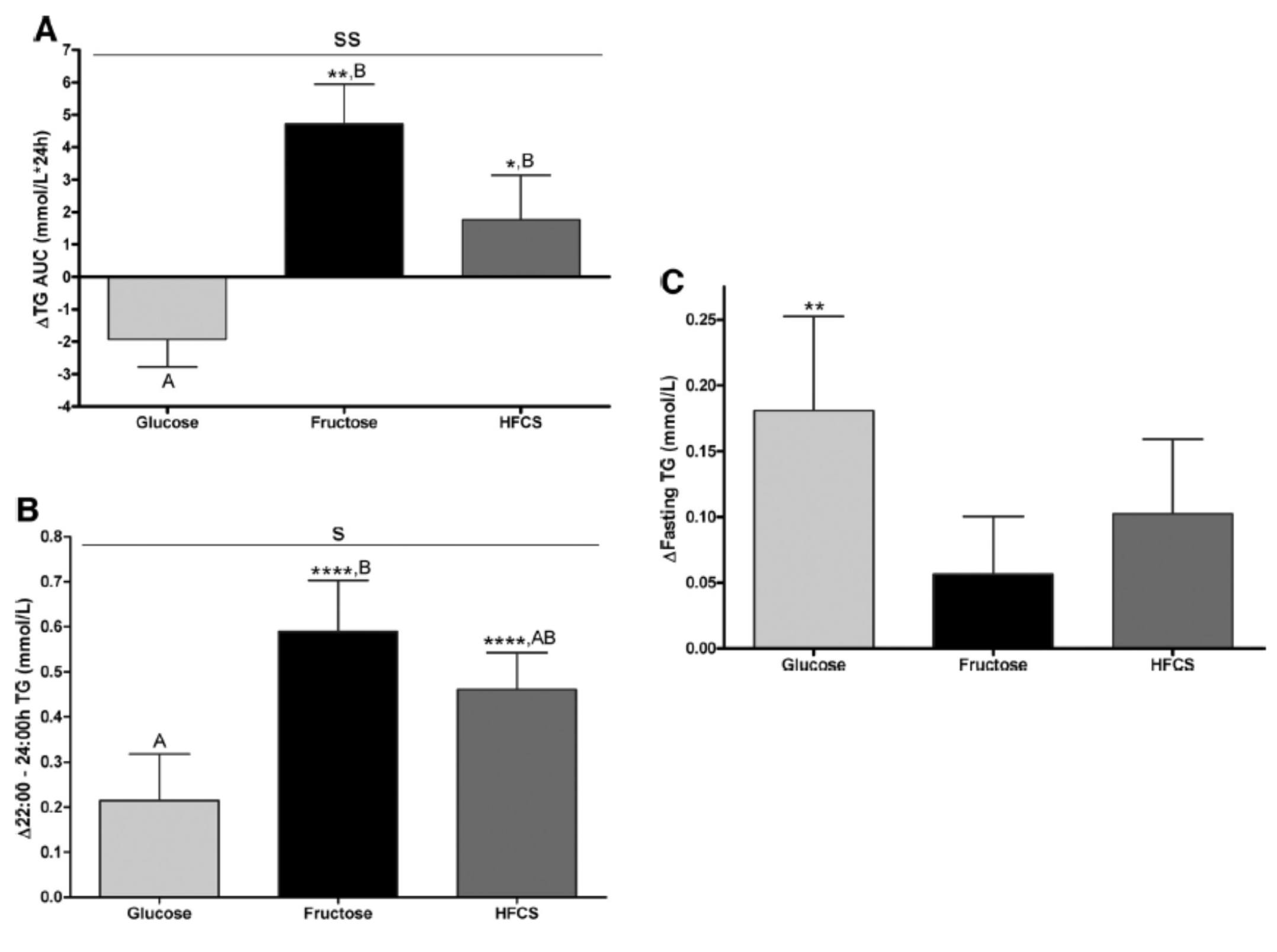
The differences were striking. The group that had all fructose and HFCS removed from their diet, despite still ingesting 55% of their total intake in the form of non-sugar carbohydrates, experienced a decline in total TG (Figure A, which represents the daily integral of plasma TG levels, or AUC). However, that same group experienced the greatest increase in fasting TG levels (Figure C). Post-prandial TG levels were elevated in all groups, but significantly higher in the fructose and HFCS groups (Figure B). The question this begs, of course, is which of these measurements is most predictive of risk?
Historically, fasting levels of TG are used as the basis of risk profiling (Figure C), and according to this metric glucose consumption appears even worse than fructose or HFCS. However, recent evidence suggests that post-prandial levels of TG (Figure B) are a more accurate way to assess atherosclerotic risk, as seen here, here, and here. One question I have is why did the AUC calculations in Figure A show a reduction in plasma TG level for the glucose group?
The figure below summarizes the differences in LDL-C, non-HDL-C, apoB, and apoB/apoA-I.
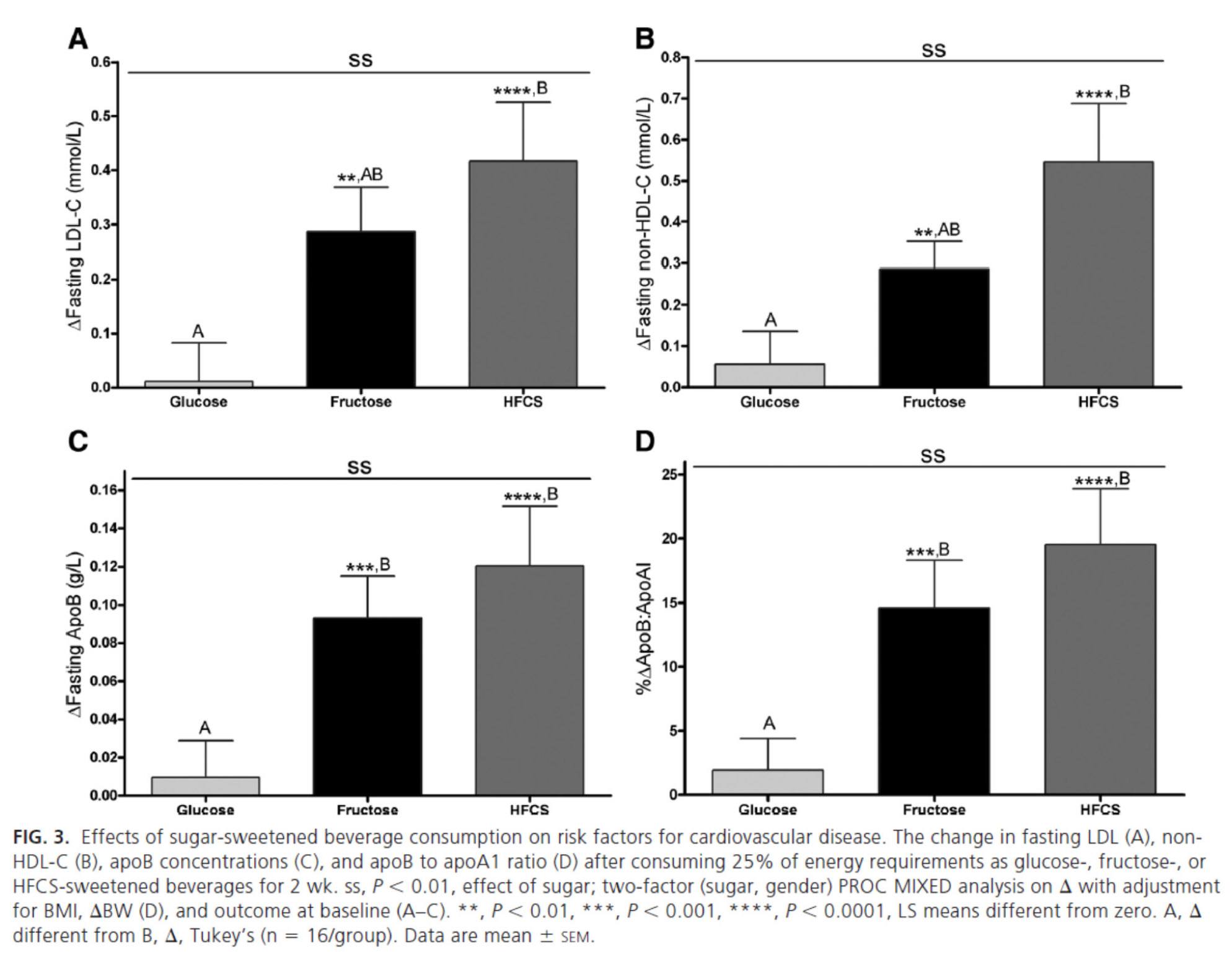
Again, the results were unmistakable with respect to the impact of fructose and HFCS on lipoproteins, and by extension, the relative lack of harm brought on by glucose in isolation. [Of course, removal of glucose and fructose/HFCS would have been a very interesting control group.]
One of the simultaneous strengths and weaknesses of this study was the heterogeneity of its subjects, who ranged in BMI from 18 to 35, in age from18 to 40, and in gender. While this provided at least one interesting example of age-related differences in carbohydrate metabolism (older subjects had a greater increase in triglycerides in response to glucose than younger subjects), it may have actually diluted the results. There were also significant differences between genders in the glucose group.
What was most interesting about this study was the clear difference between the 3 groups that was not solely a function of fructose load. In other words, the best outcome from a disease risk standpoint was in the glucose group, while the worst outcome was not in the all-fructose group, but in the 50/50 (technically 55/45) mixed group. This is a very powerful indication that while glucose and fructose alone can be deleterious in excess, their combination seems synergistically bad.
The role of saturated fat in cardiovascular disease
In the next week or two I’ll be posting an hour-long comprehensive lecture I gave at UCSD a few weeks ago on this exact topic. Rather than repeat any of it here, I’ll highlight one study that I did not include in that lecture. The study, Effect of a high saturated fat and no-starch diet on serum lipid subfractions in patients with documented atherosclerotic cardiovascular disease, published in 2003, treated 23 obese patients (average BMI 39) with known cardiovascular disease (status post coronary artery bypass surgery and/or stent placement) with a high-fat ketogenic diet. Because the study was free-living and relied on self-reporting, not all subjects had documented levels of elevated serum B-OHB. However, the subjects were instructed to avoid starch and consume 50% of their caloric intake via saturated fat, primarily in the form of red meat and cheese. There were no restrictions on fruits and vegetables, which may have accounted for the observation that not all subjects were ketotic during the 6-week intervention. In total, only 5 of the 23 patients achieved documented ketosis.
All of the subjects were on statins and entered the study at a goal LDL-C level target of 100 mg/dL, which may have been the only way the authors could get the IRB to approve such a study.
The table below shows the changes in lipoprotein fractions following the intervention (there was no control group):

This study was conducted during the height of the “outcry” over the Atkins diet. While most doctors reluctantly agreed that Dr. Atkins’ diet could reduce body fat, most believed it was still very dangerous. In the words of Dean Ornish, “Sure you can lose weight on a low-carb diet, but you can also lose weight on heroin and no one would recommend that!”
Fair point. In fact, the authors of this study acknowledged that they “strongly expected” this dietary intervention to increase risk for cardiovascular disease, which is why they only included subjects on statins with low LDL-C. However, as you can see from the table above, the authors were startled by the results. The subjects experienced a significant reduction in plasma triglycerides and VLDL triglycerides, without an increase in LDL-C or LDL-P. In fact, LDL size and HDL size increased and VLDL size decreased – all signs of improved insulin resistance. Furthermore, fasting glucose and insulin levels also decreased significantly. The mean HOMA-IR was reduced from 5.6 to 3.6 (normal is 1.0) and TG/HDL-C from 3.3 to 2.0 (normal is considered below 3, but “ideal” is probably below 1.0) in just 6 weeks. Taken together, these changes, combined with the dramatic change in VLDL size, suggest insulin resistance was dramatically improved while consuming a diet of 50% saturated fat!
As all of these patients were taking statins, we’re really robbed of seeing the impact of this diet on LDL-P, which did not change. Also, CRP levels rose (though not clinically or statistically significantly).
Putting it all together
It is very difficult to make the case that when carbohydrates in general, and sugars in particular, are removed or greatly reduced in the diet, insulin resistance is not improved, even in the presence of high amounts of saturated fats. When insulin resistance improves (i.e., as we become more insulin sensitive), we are less likely to have the signs and symptoms of metabolic syndrome. As we meet fewer criteria of metabolic syndrome, our risk of not only heart disease, but also stroke, cancer, diabetes, and Alzheimer’s disease goes down.
Furthermore, as this study on the Framingham cohort showed us, the more criteria you have along the spectrum of metabolic syndrome, the more difficult it becomes to predict your risk, due to a widening gap in discordant risk markers, as shown in this figure.
As I noted at the outset, the “dream” trial has not yet been done, though we (NuSI) plan to change that. Until then each of us has to make a decision several times every day about what we will and won’t put in our mouths. Much of this blog is dedicated to underscoring the impact of carbohydrate reduction on insulin resistance and metabolic syndrome.
The results of the trials to date, combined with a nuanced understanding of the lipoprotein physiology and their role on the atherosclerotic disease process, bring us to the following conclusions:
- The consumption of sugar (sucrose, high fructose corn syrup) increases plasma levels of triglycerides, VLDL and apoB, and reduces plasma levels of HDL-C and apoA-I.
- The removal of sugar reverses each of these.
- The consumption of fructose alone, though likely in dose-dependent fashion, has a similar, though perhaps less harmful, impact as that of fructose and glucose combined (i.e., sugar).
- The addition of fat, in the absence of sugar and starch, does not raise serum triglycerides or other biomarkers of cardiovascular disease.
- The higher the level of serum triglycerides, the greater the likelihood of discordance between LDL-C and LDL-P (and apoB).
- The greater the number (from 0 to 5) of inclusion criteria for metabolic syndrome, the greater the likelihood of discordance between LDL-C and LDL-P (and apoB).
I would like to address one additional topic in this series before wrapping it up – the role of pharmacologic intervention in the treatment and prevention of atherosclerotic disease, so please hold off on questions pertaining to this topic for now.


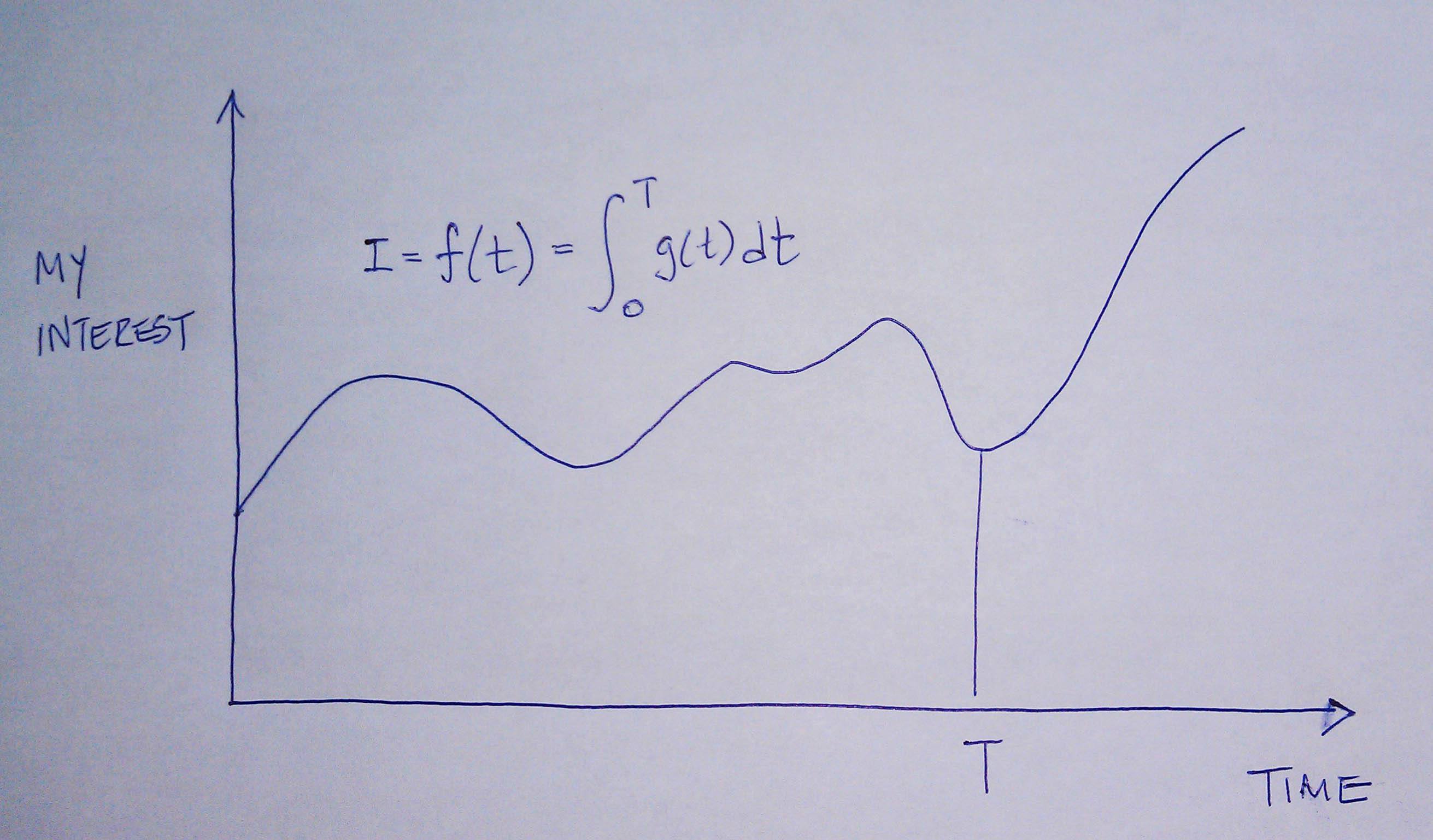
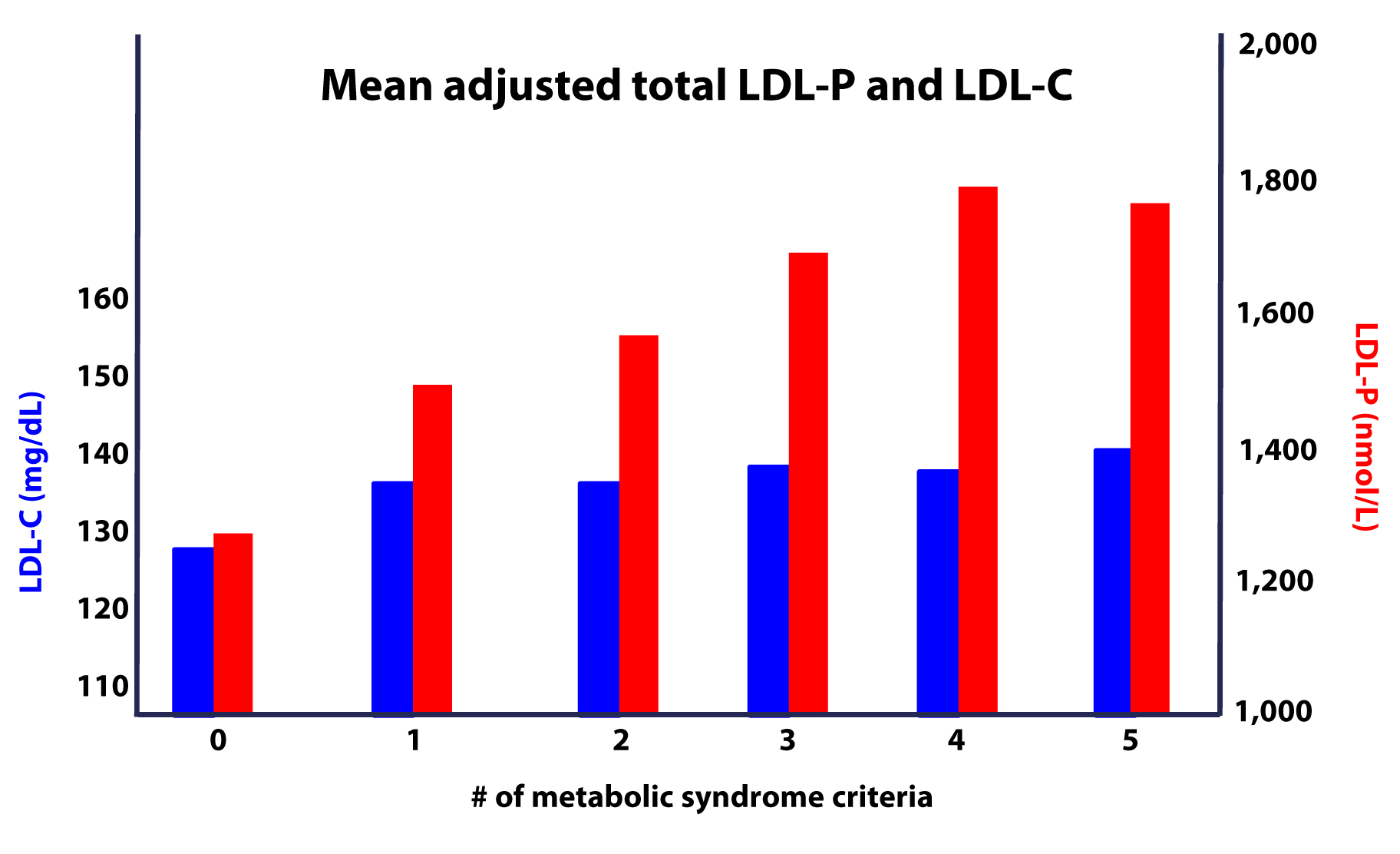
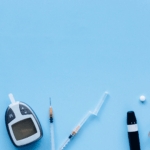
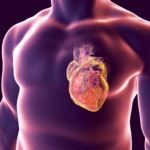
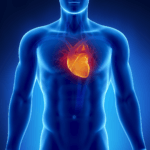

Peter,
I have a quick question for you. I just had my annual blood test. My HDL-C came back 94 (up from 71 last year and I was eating 3x’ the saturated fat back then) and my triglycerides 31 (down from 55 last year). My Triglyceride/HDL ratio is .33 (I think). Total C – 236 and LDL C – 136 both down from last year (303 and 221 on HFLC ketogenic diet).
I shared with a practitioner friend of mine and he said that based on my HDL alone that it was too high. It shouldn’t be above 80 which indicates a sign of infection like Epstein Bar. How is it possible to base that type of assumption off of my HDL-C? Your thoughts would be greatly apprecaited or anything to read.
I’m now protein/low carb athlete and feel 100 times better than last year when I was HFLC and in deep ketosis.
I’m having my NMR profile done now to compare to last years. I feel like a beast and am kicking ass.
Warmly,
Freda
The HDL is too high implies EBV comment is suspect, at best.
I know we’ve all been dying for the continuation of the cholesterol series (and the insulin series, and the …), but in the meantime you might want to point everyone to lecturepad and Dr. Dayspring’s continued presentations on cholesterol. Anyone who read your series will understand his lectures and case studies, and he talks about his view of pharmacological intervention (which you promised for part 10). His recent 8 part series updating on HDL based on current research is a masterpiece, I’m sure you’ve seen it.
I think you just did! Thanks for doing so.
Great blog. I am also a cyclist and began a sugar free diet last month. Having read much about heart disease over the last year, the science supporting low intake of dietary SFA seems week. It seems sugar may be more detrimental to our health, some of your experience seems to support that.
I feel stress plays a bigger role in heart disease than we realize, and we know stress causes inflammation. It now appears that statins strong anti-inflammatory effect could be the reason for their effectiveness in some people, not their LDL lowering capability. If you look at the timeline for heart disease in the US it started to peak after WW2, a stressful time for the country. This trend continued until a reversal began around 1970, after which a steep decline began. Interestingly, this was well before the US Nutritional Guidelines were released (1977) that recommended low intake of saturated fats. Also, if you look at a world map of CHD deaths it is most prevalent in the more oppressive or violent (stressful) societies, both in developed and underdeveloped nations.
https://www.worldlifeexpectancy.com/cause-of-death/coronary-heart-disease/by-country/
Not exactly scientific, but interesting I think.
Hi, Fantastic series of articles.
I was wondering regarding point
5. Re-absorption of the cholesterol we synthesize in our body (i.e., endogenous produced cholesterol) is the dominant source of the cholesterol in our body. That is, most of the cholesterol in our body was made by our body.
Is there any reason why a drug like Orlistat is not used in treating high cholesterol? My understanding is that it can reduce ApoB, I presume working on a very basic mechanism of blocking re-absorption.
It’s not that effective, as it is much more crude than targeted drugs that actually block sterol absorption at the NPC1L1 transporter. Also the side-effects can be pretty bad.
Went back thru the series again, but still confused. Not your fault, mine. Not looking forward to Part X if meds are the only fix for me.
What are the odds that riding a bike 15 miles on the morning of fasting blood draw would be a contributor to a more elevated LDL-P test result for a person in ketosis? Would a VLCHF diet be considered as a source of high LDL-P? If so, would changing contribution of sources of fat be a fix? I was thinking of cutting back on dairy fats and increasing olive oil and avocados. Haven’t seen anything would suggest doing or not doing. I’m an unmedicated type2 on 30 grams or less carbs per day and have been in ketosis for the most part of 3 years. I guess I need to go back on metformin, if it helps lower this like I’ve read it does. Looking back at previous HDLabs test results indicates my Apo B:Apo A-1 ratio has gone up from .59 to .97 since quitting the metformin, due a bigger increase in Apo B than Apo A-1.
It could account for a 10-15% bump, but probably not much more.
I just had an NMR test at Quest lab, 2nd largest in the US, they are now calling it the Cardio IQ test. Their cut-points are “based on analysis of data from the Malmo Diet and Cancer study cardiovascular cohort. The cohort included 4,594 individuals who were followed for 12 years.” Quest reports mainly the numbers they think are risk factors.
Protection from CVD is associated with:
* High number of small LDL particles: 1.3 times increased risk
* High number of medium LDL particles: 1.4 times increased risk
* Low number of large HDL particles: 1.8 times increased risk
My LDL-P was 888, LDL small 116, LDL med 167, all well into the optimal green zone one their chart. ApoB 64, was in the yellow moderate risk category, LP(a) 9386. According to their research, low Large HDL puts you in the high risk category. I’ve been mostly low carb high fat for the last couple years, still would like to get my HDL higher though.
Do you agree with their risk assessment categories? The large HDL seems counter to some of your analysis.
Do you think I would be in a higher risk category based on this?
Thanks
Somehow this line got left out in the last paragraph when I submitted it.
LP(a) 9386
Crazy, I think some characters I used will not print, will try again.
LP(a) less than 10, (was 4 on last VAP test), TG 79, HDL 57 (up from 47 on last VAP test), but my HDL large was 5470, in the high risk zone, well below the min. number of 6996. The optimal zone is more than 9386.
Peter – The old family doc here again. Boy, I sure do see a fair number of patients older than 70 with LDL-P over 2000. Even a few in their 80s ( I know I probably should not have done the test at their age but sometimes curiosity gets the better of me and Medicare DOES cover it)
Just today I saw a T2DM person at 2800. I have tracked her nonHDL cholesterol back as far as 2009, when I met her, at 210- 240 . We’re talking A1cs always above 9,now at 12 . Yet NORMAL Nuc Stress , no MI or CVAs .
Makes an old guy like me a bit skeptical about just how important LDL -P is. I am completely convinced it is superior to LDL-C , thus I started using it after finding your blog in 2013 .Yet I am just perplexed by the diversity and complexity of biological systems. ANother words , much as I tend to conclude that LDLP is the main driver of ASCVD , I must constantly remind myself it just is not that simple.
Wish it were.
Michael, there is no doubt other factors are at play, and I don’t just mean the “obvious” other factors like inflammation and oxidation. There are simply some people who appear to have more virulent particles than others. Wish I knew why, too…
Hi Peter,
I stumbled across your blog when I was searching for some answers about the results of my brother’s standard cholesterol test. We have been doing the ketogenic diet since Sept. 2014. I have read a lot about nutritional ketosis in books and online. I will be an intern this July and I am and always have been very interested in nutrition. I was confused when he got his results back. His results were: chol 268, LDL 201, HDL 57,TG 48,NON-HDL Chol 211, Chol/HDL 4.7. I know that this standard blood lipid profile does not actually assess his true risk, but what do you make of his high LDL? Does it really signify anything? Should he get the NMR LipoProfile instead to actually find out how many apoB particles he actually has? I would really appreciate your input on this. Thanks for the great job you’re doing! Keep it up!
I can’t make informed decisions about CHD risk without NMR (and other) tests.
Hello Peter,
I was checking out youtube videos about a month ago on the subject of Low Carb High Fat diets, when I found an interview that you had done with the Diet Doctor. I was very impressed by your technical knowledge, and your down to earth approach. Having said all of that, I am happy to say that I achieved ketosis a couple of days ago with a serum level of 0.9 mmol. Not great, but getting there….
I was in hospital a few years ago bradycardia, when they told me I had a fatty liver. Do you know anything about the relationship between fatty liver and a ketogenic diet?
I currently weigh 293 pounds, and my first goal is sustainable weight loss. I personally believe that sufficient weight loss is imperative to help reverse some of the liver damage before it is too late.
But there are some “experts” who say that a ketogenic diet may actually hamper proper liver function.
Do you have an opinion on this subject?
Kind regards,
Birgit
I don’t think we know the answer yet.
Hello Dr. Attia.
I know I’m reviving an old blog, I feel you wont mind, because of your desperate need to spread all your insights on the old understandings of cholesterol as it relates to heart disease. I feel inclined to pick your brain, simple because I admire your incredible knowledge, and respect your efforts to actually put any effort into explaining. I myself am a dedicated researcher, have no scientific nor medical background, but I hope to learn from talented people like yourself. In the hopes to provide such services like you do and other great people, by becoming an expert in areas the interest me.
My questions:
1. Having elevated LDL-P, but low ox-LDL, does their risk lower than someone with elevated LDL-P and ox-LDL?
2. Does reverse cholesterol transport happen by LDL-P transferring cholesterol onto HDL-P?I know you wrote that HDL-P transfers cholesterol to LDL-p. Do both have same united responsibilities? It seems to me both have the same actions in lipidation and dislipidation, however APO-B LDL are rebellious, and for that reason tend to get internalized by LDL-R on endothelium cells, while HDL has no role. As the concentration gradient of LDL-P increase in plasma so does the rate of foam laden macrophage, free radical oxidation, and glycation. Once the permeability happens the rate of penetration of LDL-P increases continuously.
3. I know you have not mentioned much on phytosterols, can you provide some information on it? I read that unesterfied sterols are not able to become esterified, therefore ANY particles carrying the phytosterols will become oxidized. Any truth to this? Can a dysfunction occur with acetyl-coA cholesterol acetyltransferase in the liver, which increases the risks of all particles to become oxidized?
4. Lastly, how does a smaller HDL-P provide more benefits than a larger HDL-P? From what I gather and understand is the smaller particle will carry more triglycerides than cholesterol, which will deliver more cholesterol into fat cells hence overall improving TG serum concentration? My understandings on when your loosing weight, your not only shrinking fat cells directly, but also refilling fat cells by the actions of particles, and eventually continuing the fat loss process. Meaning, your lowering TG in plasma, by dislipidation and eventually those transported triglycerides will refill fat cell and eventual undergo lipolysis too. That is how TG serum concentration drops. Is this a possibility of the many you state why small HDL particles are beneficial? I believe this will lower LDL-P count because more cholesterol can be shipped by HDL-P, resulting in lower requirement for LDL-P. All complete hypothesis/speculation on my part.
I hope you have the time to answer me, and I wish you can continue with this cholesterol blog! Hopefully I can revive your interests, to continue blogging/writing on cholesterol.
Can you provide me with any books/articles/studies/people that I should look into, towards my continuous need to perfect my understandings on cholesterol? I also have huge interests in insulin, brain: food/reward, fat cells, various dieting strategies/pathways involved, etc.
Thank You Dr. Attia,
Misha
What do you do when you have a patient on a LCHF/ketogenic diet and their LDL-P, LDL-C, inflammatory markers, LP-PLA2 all go up? If particle size is extremely large and HDL very high is the particle number still a problem? I don’t know? I think that I would recommend less saturated fat and/or adding a cholesterol absorption inhibitor but not sure. Would you test absorption markers or just treat empirically with more diet modification and medications? I have been looking for a good explanation on Dayspring’s lecture pad but striking out. Any suggestions? Thanks. Eric
Found your article, while doing research after a recent cholesterol test. Rewinding a bit, I was suffering from chest pains, and due to a recent loss in the family, anxiety (or curiosity) got the better of me, and I went for a blood test. Turns out that my LDLs are high (but no advanced blood work was done). It seems my HDLs are 58, LDLs 147, TG 60, total 217. I’m 31 years old BTW. My recent loss wasn’t much older then I am (42). And was way more fit, went from being unfit, to super hero fit with two years on keto, then to a vegan (still very fit) for a year before the incident.
I was half hoping the my LDLs would be lower, as I’ve been on the ketogenic diet religiously for two years, and my health has skyrocketed (more on that below). My carb intake is minimal at best (I only eat spinach, cauliflower, broccoli, lemon, avocado, and the rest of the food I eat is high fat animal products, no dairy, minimal butter, and lots of coconut oil). It’s a very boring way of eating, but I like it. Since my stress is almost non-existant and mental clarity has skyrocket, plus I never get sick anymore, no allergies, no trouble sleeping, or waking up (which is a big thing, I use to not want to get out of bed). Little to no anxiety (use to be very bad, and I refuse to take any pills a doctor tries to give me). And although I wasn’t planning on it, weightloss. Which I really regard as loosing excess fat that I don’t feel was necessary. I am 6ft, was 185lbs and in two years got down to 160lbs two jean sizes. And I think the only real reason I’m that slim now is I’ve not worked out seriously in the last two years due to work (though my work has me doing a lot of cardio oddly enough). Some of it muscle loss, but most of it was weight taken off my face, though I carried my weight really well, athletic looking even at 185lbs.
Rewinding a bit again, two years ago, I said enough is enough. I grew up in Canada, and the Canadian health care system pumped me full of antibiotics as long as I could remember, every sniffle I was given amoxicillin or something similar. I had stomach problems, always getting throat infections, I was told I was allergic to dust mites, dogs, everything under the sun.. I felt tired all the time and missed class a lot. Moving across the world also didn’t help. I was exposed to fungal spores and etc that I wasn’t use to, and my allergies flared up the whole year round. So one night at new years I met an ENT who seen how unwell I was, and recommended I see him. After I did, I was diagnosed with chronic tiredness (forget the medical term), stemming from mono. He gave me nasil spray for my allergies, and pills for the mono. Later I found out that my body was very adverse to gluten. And that helped with a lot of my issue, but one thing that really helped was that I started taking probiotics. At first it was sugary probiotic drinks, which turned into probiotic pills, then I started brewing my own Kefir, which I feel was godsent. Later, I went over to keto, and still maintained myself with either kefir or probiotic pills. I got a lot better, and keto was the surge I needed to feel even better. Fast forward a year, the loss happens. Fast forward another year, and I decide to get a blood test due to chest pains and numbness in my arm. My doctor says based on the tests I’m fine, but I have to cut my red meat. The weird thing is, I feel so good when I eat red meat, and other aniimal fats.. I feel less good with vegetable fats (avocado and coconut oil). I test my ketone levels every day, and I range from moderate to high.
Anyway, now I’m worried about the LDLs so I have to cut out animal fats, which I think sucks. I also have been reading the comments, and I’m worried that I’m killing off my good bacteria. So I’m wondering if there are any fats I’m not considering right now, which would help my good bacteria. Also what would be a good way to reboot all my bacteria, and how would I maintain it, while being on large keto, while still not eating bad LDL fats?
Any comments or suggestions would be great. And sorry for the long post, I’m just trying to give everyone as full of a picture as I can.
Hi Peter,
I can’t find part X of this series on cholesterol. I would be very interested in learning more about pharmacological interventions. thanks for sharing your wisdom.
Karen, it’s still in my head, which explains the failure of the ‘search’ command to locate it…
Hello Peter My GP put me onto your website. I am finding it very interesting. However, I am a psychotherapist, behaviourally trained so I get a little lost, actually a whole lot lost, in the biochemistry. Your practical examples are helpful. Re fat flux; the bucket example isn’t working for me. I am seeing it as a traffic circle. I am also interested in your swim routine. I am also a swimmer ( 2 hours a day). I understand this can be problematic in terms of cortisol but can be adjusted by the nature of the workout routine. I adjusted by diet to one similar to yours 3 years ago ( which is why I think my GP sent me your way) and now am ‘not fat’ by 95 lbs 🙂 I am still an inch short of a heart happy waistline, so I am wondering about cortisol. I saw the the reviews that criticized your diet and cortisol which leads to think you moderate that with exercise routine.
Hi Peter,
You are a national treasure!!
I’ve been on a ketogenic diet for 8 months. I feel great and have lost 60 pounds- 15 more to go. Recent NMR shows I seem to be one of those that have ldl-c (168) and ldl-p (1818) go up as a result of the diet (other markers have improved: hdl-c = 67, tri = 94). I’ve made an appointment to get a CIMT screening next week. Do you think they are useful?
I’ve heard you say that you take berberine and that it might help with lowering ldl. I plan on starting that. I’ve heard elsewhere that D-Glucarate might also be effective. Any quick thoughts about these supplements? Or, the importance and means of lowering ldl-p? Thanks!
Berberine only seems to work in those who overexpress PCSK9.
Hello Peter and everyone,
I am just getting back into studying up on diet and health. Several years ago I did a bunch of layman’s research and settled in on Dr. Kurt Harris’s now defunct https://www.archevore.com/ and Petro Dobromylskyj’s Hyperlipid website as a good blueprint of what I should eat. Just recently I came upon this website. Not sure were I should post this so I thought I’d place it here.
So here’s the long and short of it: Because my grandmother and mother died from Parkinson’s dementia and now my father (whom I am the caregiver for while he is in Hospice) I decided on slowly transitioning to a full on ketogenic diet as a sort of prophylactic strategy. Going full on for about 9 months and pretty low carb for about 6 months before that. 6 months ago feet became very tingly and painful. Now it is all the way up my legs and hands to forearms. Finally got to a Doctor yesterday (Friday) and had blood tests. Everything came back in the lower range of normal 6′ 1″ 53 years old, 155 pounds (BP 112/70) but my cholesterol (after a 24 hour fast) was just over 600!!! I didn’t think that was possible! Thought I had a mineral deficiency because I basically eat steak and eggs (approx 100 grams protein) one meal a day, now I am worried that it is Peripheral Artery Disease. The rest of my calories from fat….butter, coconut oil and heavy cream in coffee–adds up to maybe 16 grams carbohydrates. I have pretty good energy even though my sleep is very disrupted and I am handling the very high stress of what I am dealing with surprising well. I ascribed this to the high fat ketogenic diet I am on.
Come Monday my Doctor is probably going to be jumping all over this and I would like be a lot more informed on what I should do before I am prescribed statins–which I vehemently don’t want to do!
Not asking for a diagnosis (although all opinions welcome), I would appreciate any pointers and website links so I can be better informed on what to do.
605 cholesterol!!! Jeez!!!
Maurice
Hello Maurice, have you had any further thoughts on this? I have a similar response to such a diet but, apart from the LDL-c and total c, every other number is great. It seems to be the opinion on this blog and others that we are taking a massive gamble by assuming we are ok despite the FH-like numbers. I s’pose if you have access to calcium scoring or some other more accurate indication of how your arteries are doing, it’s a bit of an unknown. Epidemiology obviously does not cover someone on a diet like yours. All the best.
Hey Peter
I listened to your talk on vimeo and have been reading that you say saturated fat raises HDL and carbohydrates lowers HDL. I lost 100 lbs back in 1998 to 1999 by eating low carb diet. I started out on Atkins, but moved to dairy free version, then eventually more vegetable version. The first 80 lbs came off with this, but the last 20 came off after I became Vegan and have been that way since. I kept the weight off basically by using low carb — not ketosis, but used to do what I read at the time called “anabolic diet” and have one meal moderate carbs, then low carb the rest of the day. I never counted the green leafy vegetables or low glycemic berries.
So that is a bit of background of me.
I recently tried the McDougall diet because his reasoning and Dr. Greger’s reasoning that saturated fat causes insulin resistance (something Atkins never talked about the cause he just said it happens as you age) I thought was an interesting idea. Caldwell Esselstyn’s diet is similiar so I never worried about calories because McDougall and Esselstyn basically don’t really tell you to watch your total calories.
I was just hoping to learn something new about my body and hope perhaps I could eat a lot of manna bread, sweet potatoes, and whatever and lose bodyfat, maintain muscle, etc…
I figured if I cut my fat low enough, kind of similar to how I did with carbs and Atkins, I might make my insulin resistance super low and they said the act of eating carbs makes the insulin sensitive which from what they say means it is super efficient.
Long story short after 3 days of being on this diet I realized if I stay on it, I will make my body sick. If felt great the first day. I had like 4,000 calories though. By day 3 I came down to around 2,500. I ate all super whole food good quality organic food so absolutely no junk NEVER. I am a “healthy Vegan” 🙂
Anyway, that diet simply does not work for me at all. My question to you is Dr. Esselstyn correct about oil being bad for you and degrading the endothelium? Does coconut oil actually increase LDL and can you please watch this video and tell me if this guy, Dr. Greger, is actually giving accurate data and if not then what is the problem ?
Because what he is saying is the opposite of what you say “Saturated fat raises HDL”
https://www.youtube.com/watch?v=ZZzuPAD0_F8
I also liked what you say about Ketosis. So I am doing a Vegan version of the Ketosis. I don’t like the idea of having to count green leafy vegetable carbs, but I am. I am having a lot of coconut oil added to help with extra calories. Just trying it out and comparing it with the results I had with the 3 day McDougall diet. Yes I probably had too many calories on that diet, however you mentioned a lot about Gary Taubes and his thesis idea is basically calories does not matter.
My personal experience is the opposite. I have been a big time fitness person and always matching my physical activity with calories within the confines of a low carb diet and anytime I wanted to meet a goal I either upped the exercise or lowered calories or both. Sometimes I was not even exercising and lowered calories by cutting out coconut oil and lost 10 lbs. I just ate that many calories on the McDougall because both him and Esselstyn don’t seem to be concerned with total calories.
thanks
Spencer
Really good questions, Spencer, but the response would be 5,000 words. If I get around to doing podcasts I can address there.
Peter, do you happen to know how the ‘experts’ arrive at those “risk statistics” in the first place? It’s not an exact science and many times they are manipulated depending on who is conducting the study and/or who for. Just FYI. If you want more info, I have a nice video link I could post or send you. It breaks it down very detailed. Thanks, Tim.